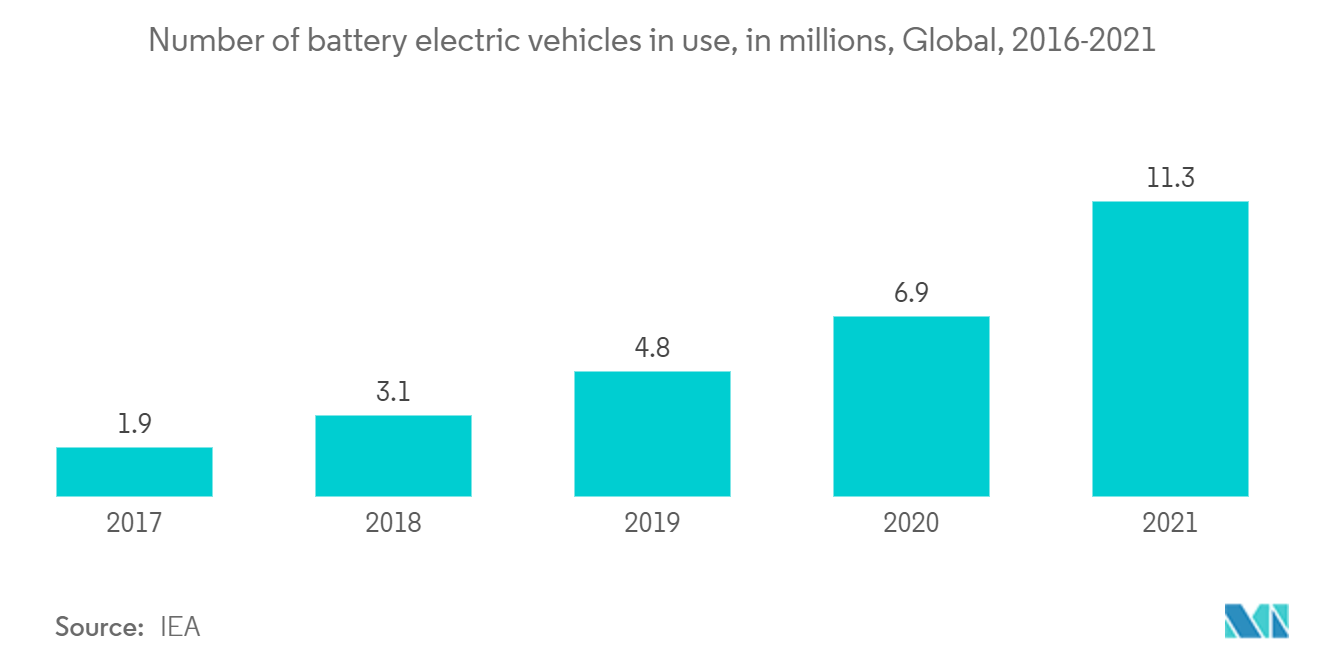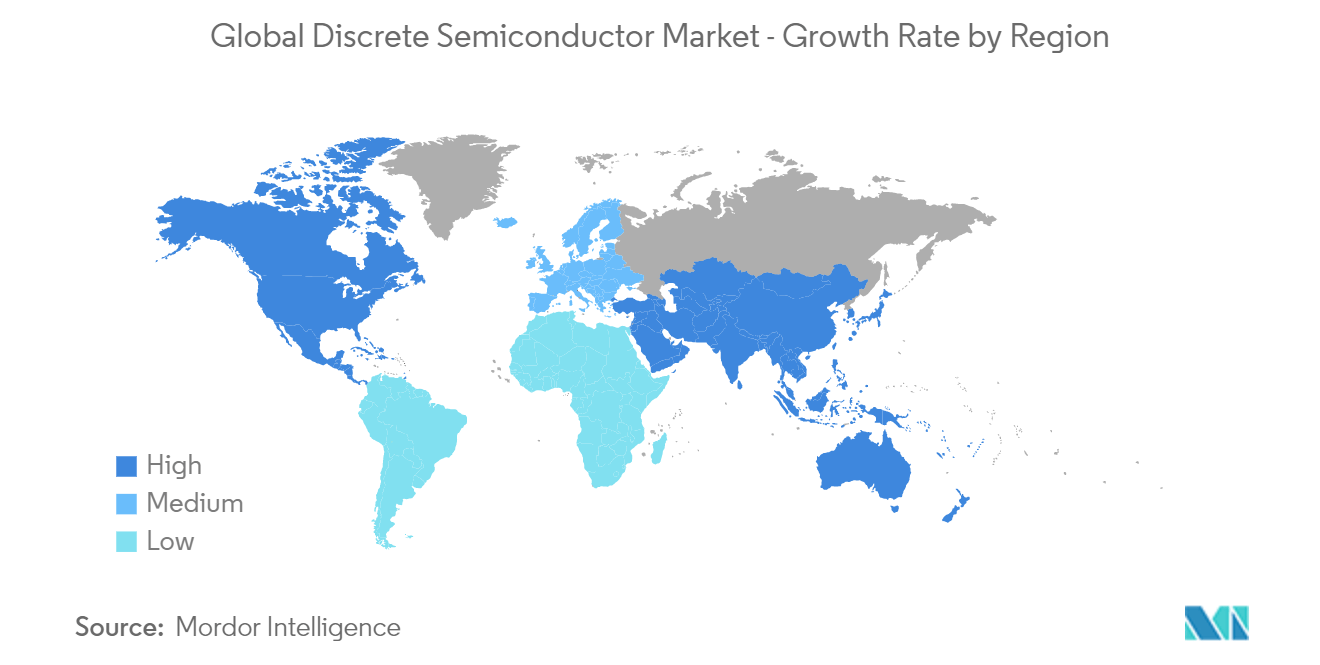Market Trends of Discrete Semiconductor Industry
The Automotive Segment is Expected to Drive the Market's Growth
- Automotive applications are driving a majority of the demand for discretes, especially for power transistors and rectifiers. Conventional cars have been using 12-V battery systems since the 1950s, but in the current scenario, they cannot handle the heavier electronic loads of next-generation vehicles, thus creating the need for power-efficiency.
- Autonomous driving and fully electric vehicles are demanding higher-performance microcontrollers and microprocessors, with more efficient, high-power MOSFETS, for power management and battery monitoring systems.
- Discrete semiconductors find widespread use in electric vehicles. Space limitations and high-efficiency requirements demand a device that can carry high power and switch at higher frequencies. They can have high currents with very low losses and at a very high frequency, creating significant demand for these devices for EV applications.
- Moreover, with the acceleration of the EV market, many car makers are now embracing 800-V drive systems to increase efficiency, achieve faster charging, and expand the range of such vehicles, all while reducing weight and cost. Wide-bandgap devices, such as SiCMOSFETs, are helping automakers advance state-of-the-art power devices for EV powertrains and other applications where such factors are important.
- In December 2022, STMicroelectronics launched new silicon-carbide (SiC) high-power modules designed to increase electric vehicles' performance and driving range. Five new SiC MOSFET-based power modules have been selected by Hyundai for use in the E-GMP electric vehicle platform shared by the KIA EV6 and multiple models.
- In August 2022, Renesas Electronics Corporation announced the development of a new generation of Si-IGBTs. Through this launch, the company imed at next-generation EV inverters, AE5-generation IGBTs were expected to be mass-produced starting in the first half of 2023 on Renesas' 200- and 300-mm wafer lines at the company's factory in Naka, Japan.
- The EVs market is highly competitive, and new manufacturers are pushing the envelope for innovation. For instance, Porsche equipped its Taycan with an 800 V system, while many contemporary electric cars operate with 400 V batteries. This led traditional automotive component manufacturers to develop their discrete semiconductor lineup for the automotive sector.

The Americas is Expected to Hold a Major Market Share
- The proliferating consumer electronics industry in the region is one of the primary factors driving the growth of the market. For instance, according to the Consumer Technology Association (CTA), U.S. technology retail revenues are expected to reach USD 485 billion in 2023. Though it is slightly down from the record-breaking USD 512 billion in 2021, the revenues will still remain above pre-pandemic levels, as per the organization.
- Further, emerging technologies like the Internet of Things (IoT) have created a new wave of innovation in the semiconductor industry. An increasing number of electronic devices, ranging from laptops to thermostats, are becoming connected each year in the region, allowing for more sophisticated communication and coordination between them and their users. For instance, as per the CTA, 23% of U.S. homes had smart or connected health monitoring devices in 2021, and 19% had connected sports or fitness equipment (up seven points from the previous year). The expanding IoT market is expected to positively influence the region's demand for discrete semiconductors.
- The automotive sector in the United States is a crucial component of economic growth and has historically contributed 3 - 3.5% to the overall Gross Domestic Product (GDP), as per the Center for Automotive Research. The industry also contributes to a significant portion of the region's total demand for semiconductor components.
- The automotive industry's transformation toward electrification is also fueling the demand for sophisticated semiconductor components. For instance, as per IEA's annual Global Electric Vehicle Outlook 2023, the United States is the third largest electric vehicle market, with strong sales growth of 55%.
- Moreover, according to Argonne National Laboratory, in FY2023, 97,972 HEVs were sold in the United States, up 36.4% from the sales in April 2022. Toyota accounted for a 44.3% share of total HEV sales this month.
- The growing renewable energy sector in Canada is also expected to support market growth. According to the Canadian Renewable Energy Association (CanREA), Canada's wind and solar energy sectors grew significantly in 2022. As per the organization, solar is growing particularly quickly, with more than one-quarter of all the installed capacity in Canada being added in 2022 alone.

